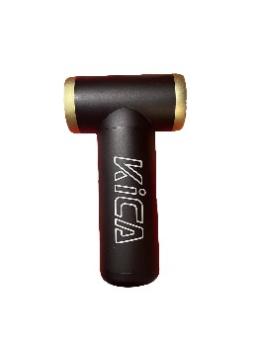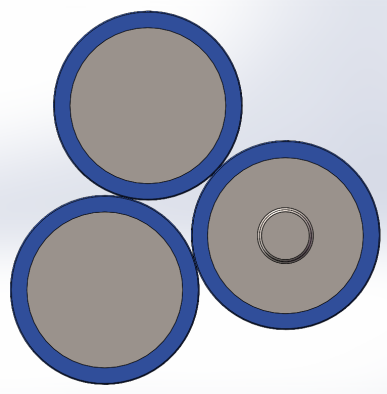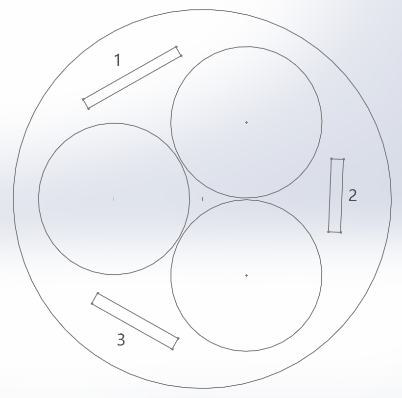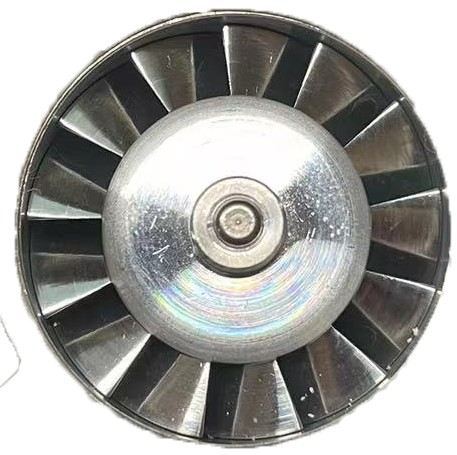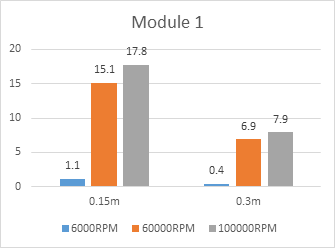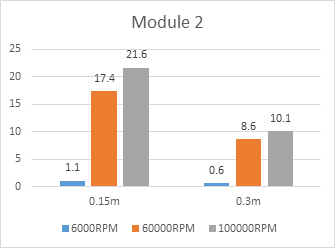1. Introduction
Traditional fans are designed for long endurance and portability. On the market, there is no large portable high-power fan. Because there are only a few high-speed hand-held fans on the market, the goal of this research is to invent one. It needs to work well in many situations, such as in the wild. It requires very high wind speeds. Cool appearances and practical functions are often more attractive to consumers[1]. So the design of the appearance will also be considered in the research. The theory is to use a high-speed turbofan coupled with a tube to funnel air into a columnar path. So it will have huge momentum. This study will summarize the advantages and disadvantages of the products on the market to get a comprehensive result.
2. Modularization
A product usually consists of many parts. Each component has a role to play. In common integrated products, when a component is broken, it will be difficult to repair. And broken parts sometimes affect other parts. For example, the charging port in a mobile phone is broken. It will build up so much heat that nearby parts will burn up. And you have to take the whole thing apart when you want to fix it. This is tedious. But when the device adopts a modular design, the repair steps will be much easier. The impact on other parts will also be reduced. In a desktop computer, for example, the power supply fails. People can remove the power supply and replace it with a new one. Then figure out how to repair the old power supply or discard it. It won't affect your use of the computer, it won't hurt the computer, and it's simple. So modular design is useful[2-3].
But not all products are suitable for modular design. Some sophisticated and small products are not suitable for modular design, because the connection of each module needs to occupy a large space. For example, a mobile phone is made up of many parts. If every part of the interior were designed to be modular and detachable, it would greatly increase its size and weight, thus defeating the original intention of its portability.
But in this study, the composition of the fan is very simple. Its main components are the shell, battery, motherboard and motor. A shell was designed for this study. It is divided into two parts: the power module and the fan module. The motherboard is placed in the gap between the battery or motor and the housing. The housing will be designed with slots for the motherboard so that it can be securely fixed to the shell.
3. Analysis of existing products
The study chooses the highest-selling products on the market that met the requirements. This kind of fan on the market is generally composed of two cylindrical structures. The main components of which are the power supply, motherboard, shell and motor. Figure 1 shows the product on the market. The grip part is the battery, which provides power. Above the battery is the motherboard. The tubular structure perpendicular to the grip is the fan.
|
Figure 1. The fan in the market. |
The advantages lie in its selection of a 110,000 RPM high-speed turbo-motor with a wind speed of up to 24 m/s. The 2,100mah battery is enough to run it for an hour at maximum air volume (to be determined). It has multiple functions. The main function is to clean the dust. The secondary function is to inflate the hovercraft in the field support the fire, shape the hair and so on.
The disadvantage lies in its small battery capacity, which cannot support outdoor use for a long time. And the ordinary charging structure is used, only 5W, and it takes 3 hours to fill the 2,100mAh battery. Its structure is not easy to store, and it is easy to get stuck when placed with other tools. Its closed structure also makes it difficult to repair in the event of a failure.
4. Battery module design
If the battery capacity is too small to support long-term outdoor use, it is necessary to solve its battery problem. It is not feasible to add an accelerated charging module, because it will greatly increase the overall heat generation, which may cause the battery to explode, and there is a serious safety hazard. And its portable requirements do not allow allow for an increased heat dissipation device, and general outdoor activities will not carry portable power. So this research turned to expanding battery capacity.
The final solution is to separate the battery module from the fan module and make multiple battery modules separately for portability.
It uses three 18650 batteries with a combined capacity of 9,000mAh [4]. The battery is arranged in a triangular shape with a triangular prism. Figure 2 shows the way the batteries are arranged. The shell is cylindrical. Figure 3 is the shell structure of the battery part. The holes in the gap between the triangular prism and the cylinder are reserved to fix the circuit board. The 1 in the Figure 3 is the charge management board. The 2 in the Figure 3 is the battery protection board. The 3 in the charge is the motor drive plate.
|
Figure 2. The way the batteries are arranged. |
|
Figure 3. The shell structure of the battery part. |
5. Fan module design
This chapter will be divided into two parts: the selection of the motor and the design of air inlet and air outlet.
5.1. Choice of fan
The fan is a general term for a machine that relies on input mechanical energy to increase gas pressure and send gas side by side. It has many types. Axial fans and centrifugal fans are two of the more common. The functions of the two fans are similar. However, there are some distinctions. The main differences between an axial fan and a centrifugal fan are as follows: the exhaust mode of an axial fan is to exhaust air along the axis, and the air inlet and outlet of the fan are on the same axis. The outlet of the centrifugal fan is generally perpendicular to the intake, and it can carry 360-degree oriented exhaust air.
The research includes a 110,000 RPM turbo fan. It is a type of axial fan with a small pressure head that relies on its ultra-high speed to provide continuous strong airflow. It makes a rated input of 12 volts and 8 amps. This provides a very powerful incentive. But because of its high rotational speed, it has a very loud noise. So this fan is designed for short periods of time or outdoor use. But this research does not have to worry about noise. Figure 4 illustrates the fan motor selected in this study.
|
Figure 4. The fan motor. |
5.2. The design of the air inlet and air outlet
The whole fan is cylindrical. The lower part is the power module, and the upper part is the fan module. The motor is located in the center of the whole module. The module housing is composed of two parts, each of which has a limit slot. They hold the fan firmly in the center. Air will be drawn from the space reserved below, compressed by the fan and blown out from above.
The air intake and the design of the air intake are important. If the air intake is too small, it will cause insufficient air intake and affect the air volume of the fan. The airflow will not be strong enough if the outlet is too big. If the air outlet is too small, it will burn the motor.
In this study, assuming that air is an incompressible viscous fluid, there is no heat transfer, only mass and momentum are conserved, then this study uses the Navier-Stokes equation:
\( \frac{∂ρ}{∂t}+\frac{∂}{∂{x_{i}}}(ρ{u_{i}})=0\ \ \ (1) \)
\( \frac{∂}{∂t}(ρ{u_{i}})+\frac{∂}{∂{x_{j}}}(ρ{u_{i}}{u_{j}})=\frac{∂p}{∂{x_{i}}}+ρ{g_{i}}+\frac{∂}{∂{x_{j}}}(μ\frac{∂{u_{i}}}{∂{x_{j}}})+{S_{i}}\ \ \ (2) \)
In the formula: \( ρ \) is the density of air, \( kg/{m^{3}} \) ; \( i \) and \( j \) are the dimensions of motion; \( u \) is the speed, \( m/s \) ; \( p \) is the pressure, \( Pa \) ; \( μ \) is the viscosity of air, \( Pa∙s \) ; \( S \) is the momentum source term, \( N/{m^{3}} \) .
By controlling the rotation speed of the fan blade and the shape of the air outlet, the wind speed at points with different distances from the fan axis is studied.
Two different air outlet designs were used in this study. The motor module is installed in front of the module. One is a net with the spokes arranged clockwise (module 1) [1], and the other is a conical air duct (module 2).
In the research, the method of controlling the output power is used to set two different speeds as a comparison. They are 6000 RPM (low speed), 60000RPM (medium speed) and 100000 RPM (high speed). The test monitoring points were set at 0.3m (test point 1) and 0.15m (test point 2) directly in front of the shaft.
The study used 3D printing technology to create a simple case for testing. The test results are shown below in figure 5 and figure 6:
|
Figure 5. Test data of module 1. |
|
Figure 6. Test data of module 2. |
In summary, cylindrical wind ducts bring stronger wind speeds. But because of the diversity of modular designs, another design will be adopted. The mesh module will have magnets on both sides. This will allow it to spread the wind when installed in the opposite direction, creating a natural wind effect[5].
6. Multi-function design in the fan
The versatile design of outdoor tools is advantageous.[6] An indicator is added to the power module to monitor the power supply in real-time. The charging interface on the power module can simultaneously charge and discharge, so it can be used as a power bank.
7. Conclusion
In this paper, a new multifunctional, high-power portable fan based on a modular design is proposed. A variety of practical functions were added to the traditional fan.
In this study, the portable fan was improved. In this study, the fan is designed modularized. The power supply and fan modules are designed and tested increased the versatility of the product.
3D printing technology facilitated the testing of the study. Hopefully this technology will become more common in the future. Among the results of this research, the modular design enhances the practicability of the product and optimizes the consumer experience.
References
[1]. Wu Zhiyuan, Ding Jiawen, Yi Wen. Research on the experiential Design of small Household Appliances -- Taking the design of hair Dryer as an example, Science and Education Guide - Electronic Edition (late), 2019(12):125.
[2]. Liu Yanping, Chen Jianbo. Application of Modern Modular Design Theory in Fan Products [J], Home appliance technology, 2011(8):84-86. DOI:10.3969.
[3]. Li Wei. Modular Design in Mechanical Design [J], Equipment Management and Maintenance, 2019(13):147-148. DOI:10.16621.
[4]. Liao Xiaodong, Zhang Zhongwei, Huang Xinglan, et al. Research on the Performance of Ternary System 18650 Battery [J], Dongfang Electric Review, 2022,36(2):1-4,8. DOI:10.3969.
[5]. Li Tianxiang, Chen Jiajing, Huang Hongmei. Innovative Design of Desktop Small Fan Based on CFD Technology [J], Applied Science and Technology, 2020,47(2):104-109. DOI:10.11991.
[6]. Ding Jie. Research on Multifunctional Design [J], Science and Technology and Innovation, 2015(8):113-113,118. DOI:10.15913.
Cite this article
Pan,Z. (2023). Research on the Design and Improvement of a Kind of Modular Multi-Functional High-Power Portable Fan. Theoretical and Natural Science,5,324-329.
Data availability
The datasets used and/or analyzed during the current study will be available from the authors upon reasonable request.
Disclaimer/Publisher's Note
The statements, opinions and data contained in all publications are solely those of the individual author(s) and contributor(s) and not of EWA Publishing and/or the editor(s). EWA Publishing and/or the editor(s) disclaim responsibility for any injury to people or property resulting from any ideas, methods, instructions or products referred to in the content.
About volume
Volume title: Proceedings of the 2nd International Conference on Computing Innovation and Applied Physics (CONF-CIAP 2023)
© 2024 by the author(s). Licensee EWA Publishing, Oxford, UK. This article is an open access article distributed under the terms and
conditions of the Creative Commons Attribution (CC BY) license. Authors who
publish this series agree to the following terms:
1. Authors retain copyright and grant the series right of first publication with the work simultaneously licensed under a Creative Commons
Attribution License that allows others to share the work with an acknowledgment of the work's authorship and initial publication in this
series.
2. Authors are able to enter into separate, additional contractual arrangements for the non-exclusive distribution of the series's published
version of the work (e.g., post it to an institutional repository or publish it in a book), with an acknowledgment of its initial
publication in this series.
3. Authors are permitted and encouraged to post their work online (e.g., in institutional repositories or on their website) prior to and
during the submission process, as it can lead to productive exchanges, as well as earlier and greater citation of published work (See
Open access policy for details).
References
[1]. Wu Zhiyuan, Ding Jiawen, Yi Wen. Research on the experiential Design of small Household Appliances -- Taking the design of hair Dryer as an example, Science and Education Guide - Electronic Edition (late), 2019(12):125.
[2]. Liu Yanping, Chen Jianbo. Application of Modern Modular Design Theory in Fan Products [J], Home appliance technology, 2011(8):84-86. DOI:10.3969.
[3]. Li Wei. Modular Design in Mechanical Design [J], Equipment Management and Maintenance, 2019(13):147-148. DOI:10.16621.
[4]. Liao Xiaodong, Zhang Zhongwei, Huang Xinglan, et al. Research on the Performance of Ternary System 18650 Battery [J], Dongfang Electric Review, 2022,36(2):1-4,8. DOI:10.3969.
[5]. Li Tianxiang, Chen Jiajing, Huang Hongmei. Innovative Design of Desktop Small Fan Based on CFD Technology [J], Applied Science and Technology, 2020,47(2):104-109. DOI:10.11991.
[6]. Ding Jie. Research on Multifunctional Design [J], Science and Technology and Innovation, 2015(8):113-113,118. DOI:10.15913.










